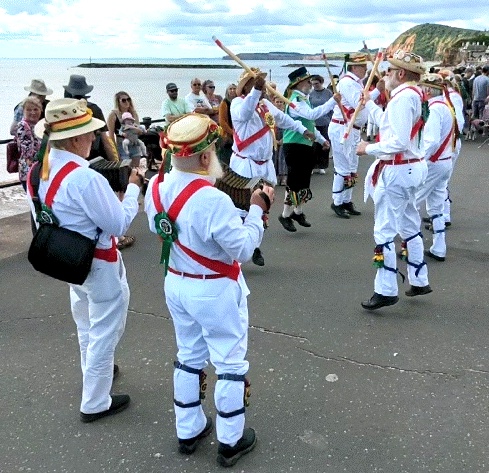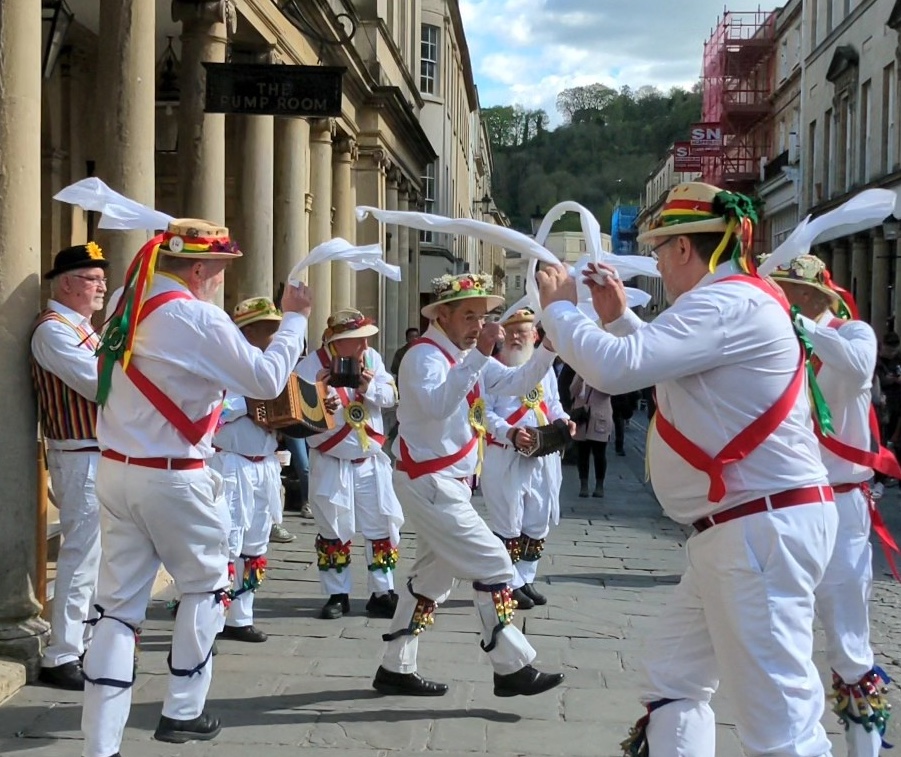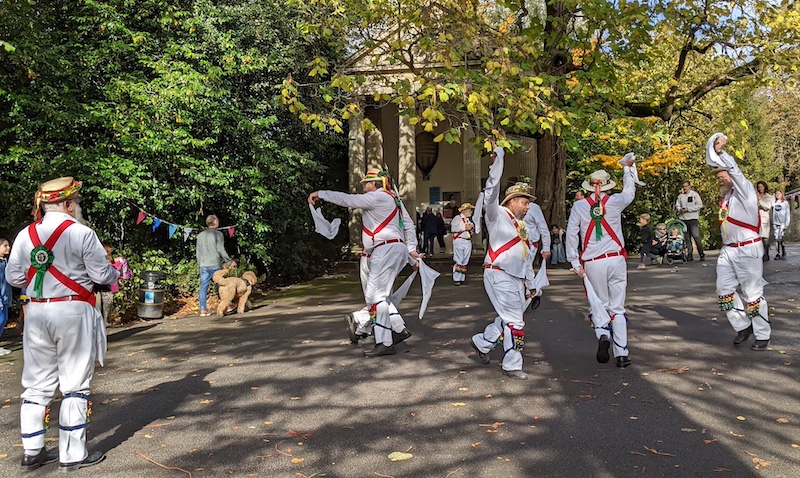Bathampton Morris Men
Dancing Cotswold Morris
in Bathampton, North Somerset, West Wiltshire and beyond
since 1934
Hankies, Sticks & Music
Bathampton Morris Men formed in 1934 in the small village of Bathampton, just east of the city of Bath in the Cotswolds. We dance in villages and towns around Bathampton to celebrate the milestones of the year, from Plough Sunday in January, to St George’s Day, May Day and on into Summer.
We dance to bring music and bells to village fêtes. We dance to liven up warm summer evenings for drinkers and diners at local pubs. We dance to entertain tourists in Bath and beyond. We dance on tour in the Cotswolds, at Sidmouth Folk Festival and sometimes much further afield.
And of course we dance for ourselves, because flicking hankies, thwacking sticks and making happy music is unadulterated fun. Plus it’s an excuse for refreshments and a chat.

Join in
New members are always welcome. Best is to come along to our winter practice sessions: Thursdays, in Winsley Church Hall starting at 8pm.
Contact us
Do get in touch. We are always happy to discuss dancing at your event.
Dance Programme

Summer Programme
Upcoming dance events are listed on our Events page, which includes any last-minute changes we have had to make.
You can download a PDF copy of the printed version of our programme by clicking below. (This will not contain any changes that have been made since it was printed).

Recent Events
A quick guide to watching Morris
Here are some things to look out for while you’re watching us dance.
Local traditions are strong and Bathampton, like other Morris sides, has its own way of dancing, but here we’ll focus on features of Morris that are common across the Cotswolds.
We dance everything from single-man jigs to 8-person sets. Mostly the music is from boxes with bellows. From smallest to largest these are concertinas, melodeons and accordions, depending on who’s playing and who’s dancing.
There are hankie dances, stick dances and occasionally clapping dances. Different styles of dance call for sharper or gentler hankie flicks, for helicopter movements or loops at the side. Sticks can be small or large, sometimes both at the same time. They do get damaged, though knuckles usually escape.

Dances are made up of figures, including:
- A hey is usually a figure of eight on the side of the set. Sometimes with a pause or flourish half way through. The hey is often repeated as the music repeats, like a chorus.
- In a half-gyp we pass to the opposite side of the dance, then return backwards.
- In a (full) gyp we rotate around the dancer opposite and back to place.
- A back-to-back starts like a half-gyp, but on the far side we pass back to back, then return. Like a do-si-do in line dancing, but with bells on!
Within a figure, we move around with steps. The basic steps are single step (step-hop) and double step(step-step-step-hop), a feet-together jump, and a forward-kicking caper. More challenging are slows: slow step sequences including the “beetle-crusher”, “right toe behind” and “hook leg”. It’s even more fun than it looks.
If you’re a patient observer, you might catch a glimpse of our horse. She does have a sense of rhythm, but finds double-stepping awkward with four hooves to choose from.
If you’re interested, the best time to join is when rehearsals start up after the Summer, in October. New dancers are always welcome.

